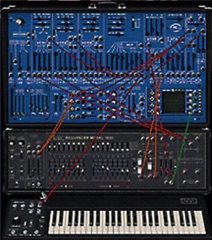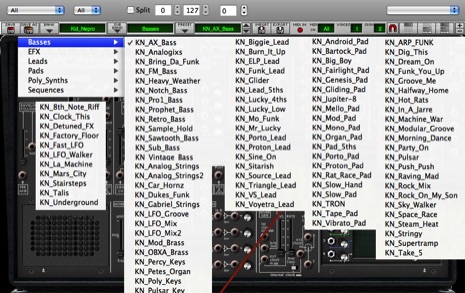
ARP2600 V
100 New Virtual Analog Sounds
Only $25
You wonder what the history of pop music would have been like if Alan R. Pearlman had not released the ARP2600 in 1970. What would Steve Wonder's "Innervisions" have sounded like? What about "Who's Next" or Weather Report's "Birdland" - from their amazing "Heavy Weather" album. Who could forget Edgar Winter's "Frakenstein" where he actually strapped the ARP's keyboard around his neck and played it like a guitar player when performing live. As far as I know that's the first time anyone did that - so I guess that was the birth of the keyboard strap on controller. Thanks to Edgar and the ARP us keyboard players where now free to run around the stage just like our guitar playing mates.
In the eleven years between 1970 and 1981 ARP released three versions of the 2600. The first, dubbed the "Blue Marvin", was named after ARP's then CFO Marvin Cohen. Only a few of these were made (approx. 25) and they were mostly built in a garage! The later "grey" ARP 2600s, were built in a vinyl covered wood case and contained an imitation of Bob Moog's famous 4-pole "ladder" filter. This led to legal battles between Moog and ARP which forced ARP to design their own filter for their next version. Finally, in order to fit in with the black/orange theme of ARP's other synthesizers, the ARP 2600s were manufactured with orange labels over a black aluminum panel. The mid-production grey 2600 models featured many changes amongst themselves. Changes in circuitry and panel lettering provided at least three different grey panel models.
The ARP2600 design combined modular synthesis and realtime performance. Functionally, the ARP 2600 was completely modular: any signal output could be routed to any signal input, with a patch cord. Operationally, the ARP 2600 was integrated, using internally-wired default signal paths that made it possible to create a wide range of keyboard patches by simply opening up slide attenuators.
The ARP2600 was a monophonic synth - so you could only play one note at a time. The sound patches that were created could not be stored in it's memory - so any patches that you programmed would have to be written down on data sheets to remember all the settings. Even with all it's limitations by todays standards, it was one of the most widely used synths during the 70's by some of the biggest names in the music business. Its modular design, also made the ARP 2600 a widely used teaching instrument in many schools and music conservatories.
Moving ahead to 2005 saw the ARP2600 come into the digital age when "Arturia" recreated the classic in a virtual software. It has all the original parameters as the original with lot's of cool new features including polyphony (so you could play more then one note at a time), digital effects and much more real time controls via the new modulation matrix. Of course, you can now store as many patches as you like and recall them with the click of a mouse.
Kid Nepro has been programming analog synths since the early 80's and has lot's of experience working with modular and subtractive synthesis. The collection of sounds that we have programmed for the Arturia V collection is done with expert care from someone who knows the ARP2600 very well - so you can be sure that the sounds are well crafted and sound great.
Our ARP2600 V Collection is available as a download via our free e-mail delivery. Just import the file in your Arturia software and your ready to roll!
If you have any questions just contact us. Our customer support rules!
Mars City


Morning Dance
Rock Pulse

